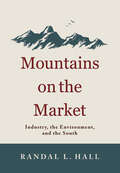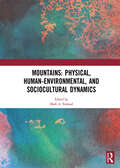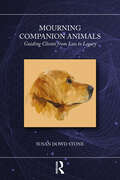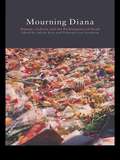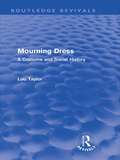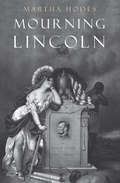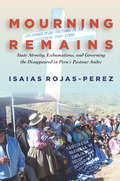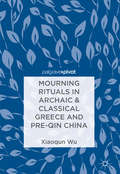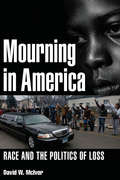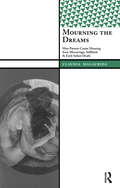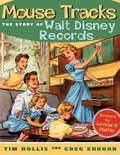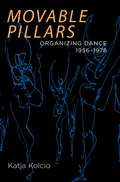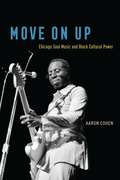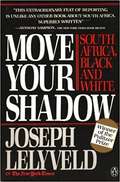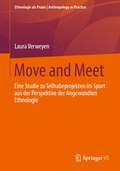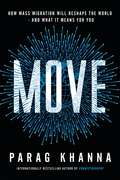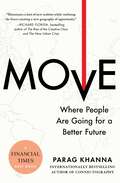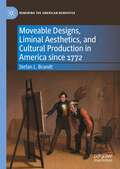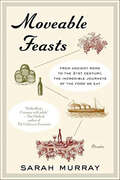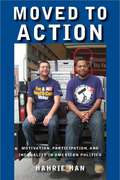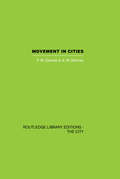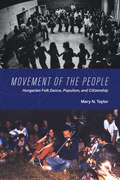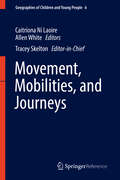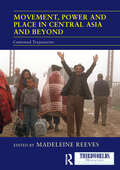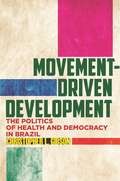- Table View
- List View
Mountains on the Market: Industry, the Environment, and the South (New Directions In Southern History Ser.)
by Randal L. Hall“This is a landmark not only of Appalachian history but of southern economic and environmental history as well.” —John C. Inscoe, author of Race, War, and Remembrance in the Appalachian SouthManufacturing in the Northeast and the Midwest pushed the United States to the forefront of industrialized nations during the early nineteenth century; the South, however, lacked the large cities and broad consumer demand that catalyzed changes in other parts of the country. Nonetheless, in contrast to older stereotypes, southerners did not shun industrial development when profits were possible. Even in the Appalachian South, where the rugged terrain presented particular challenges, southern entrepreneurs formed companies as early as 1760 to take advantage of the region’s natural resources.In Mountains on the Market: Industry, the Environment, and the South, Randal L. Hall charts the economic progress of the New River Valley in the Blue Ridge Mountains of southwestern Virginia, which became home to a wide variety of industries. By the start of the Civil War, railroads had made their way into the area, and the mining and processing of lead, copper, and iron had long been underway. Covering 250 years of industrialization, environmental exploitation, and the effects of globalization, Mountains on the Market situates the New River Valley squarely in the mainstream of American capitalism.“Southernists will now refer to this book first in thinking about the historical development of the extractive industries, their impact on the environment, and what it tells us about the South.” —David Brown, coauthor of Race in the American South: From Slavery to Civil Rights“An excellent microhistory of an understudied region of the Appalachian South.” —North Carolina Historical Review
Mountains: Physical, Human-Environmental, and Sociocultural Dynamics
by Mark A. FonstadMountains have captured the interests and passions of people for thousands of years. Today, millions of people live within mountain regions, and mountain regions are often areas of accelerated environmental change. This edited volume highlights new understanding of mountain environments and mountain peoples around the world. The understanding of mountain environments and peoples has been a focus of individual researchers for centuries; more recently the interest in mountain regions among researchers has been growing rapidly. The articles contained within are from a wide spectrum of researchers from different parts of the world who address physical, political, theoretical, social, empirical, environmental, methodological, and economic issues focused on the geography of mountains and their inhabitants. The articles in this special issue are organized into three themed sections with very loose boundaries between themes: (1) physical dynamics of mountain environments, (2) coupled human–physical dynamics, and (3) sociocultural dynamics in mountain regions. This book was first published as a special issue of the Annals of the American Association of Geographers.
Mourning Companion Animals: Guiding Clients from Loss to Legacy
by Susan Dowd StoneMourning Companion Animals is a guidebook for mental health clinicians searching for effective, compassionate resources to guide their clients through the often-devastating experience of animal companion loss.Chapters offer powerful and comprehensive strategies to heal animal companion loss based in sound, evidenced based, theoretical perspectives. The included author-generated inventory, the animal companion bereavement questionnaire, provides further assistance in clinician exploration of each client’s unique bond with their lost companion.The book’s content is the result of more than twenty-five of extensive work within the human-animal bond, clinical training in the referenced therapies, and application of major psychodynamic theories.
Mourning Diana: Nation, Culture and the Performance of Grief
by Adrian Kear Deborah Lynn SteinbergThe death of Diana, Princess of Wales, on September 1 1997, prompted public demonstrations of grief on an almost unprecented global scale. But, while global media coverage of the events following her death appeared to create an international 'community of mourning', popular reacions in fact reflected the complexities of the princess's public image and the tensions surrounding the popular conception of royalty. Mourning Diana examines the events which followed the death of Diana as a series of cultural-political phenomena, from the immediate aftermath as crowds gathered in public spaces and royal palaces, to the state funeral in Westminister Abbey, examining the performance of grief and the involvement of the global media in the creation of narratives and spectacles relating to the commemoration of her life. Contributors investigate the complex iconic status of Diana, as a public figure able to sustain a host of alternative identifications, and trace the posthumous romanticisation of aspects of her life such as her charity activism and her relationship with Dodi al Fayed. The contributors argue that the events following the death of Diana dramatised a complex set of cultural tensions in which the boundaries dividing nationhood and citizenship, charity and activism, private feeling and public politics, were redrawn.
Mourning Dress: A Costume and Social History (Routledge Revivals)
by Lou TaylorFirst published in 1983, Mourning Dress chronicles the development of European and American mourning dress and etiquette from the middle ages to the present day, highlighting similarities and differences in practices between the different social strata. The result is a book which is not only of major importance to students of the history of dress but also to anyone who enjoys social history.
Mourning Lincoln
by Martha HodesA historian examines how everyday people reacted to the president&’s assassination in this &“highly original, lucidly written book&” (James M. McPherson, author of Battle Cry of Freedom). The news of Abraham Lincoln&’s assassination on April 15, 1865, just days after Confederate surrender, astounded a war-weary nation. Massive crowds turned out for services and ceremonies. Countless expressions of grief and dismay were printed in newspapers and preached in sermons. Public responses to the assassination have been well chronicled, but this book is the first to delve into the personal and intimate responses of everyday people—northerners and southerners, soldiers and civilians, black people and white, men and women, rich and poor. Exploring diaries, letters, and other personal writings penned during the spring and summer of 1865, historian Martha Hodes captures the full range of reactions to the president&’s death—far more diverse than public expressions would suggest. She tells a story of shock, glee, sorrow, anger, blame, and fear. &“&’Tis the saddest day in our history,&” wrote a mournful man. It was &“an electric shock to my soul,&” wrote a woman who had escaped from slavery. &“Glorious News!&” a Lincoln enemy exulted, while for the black soldiers of the Fifty-Fourth Massachusetts, it was all &“too overwhelming, too lamentable, too distressing&” to absorb. Longlisted for the National Book Award, Mourning Lincoln brings to life a key moment of national uncertainty and confusion, when competing visions of America&’s future proved irreconcilable and hopes for racial justice in the aftermath of the Civil War slipped from the nation&’s grasp. Hodes masterfully explores the tragedy of Lincoln&’s assassination in human terms—terms that continue to stagger and rivet us today.
Mourning Remains: State Atrocity, Exhumations, and Governing the Disappeared in Peru's Postwar Andes
by Isaias Rojas-PerezMourning Remains examines the attempts to find, recover, and identify the bodies of Peruvians who were disappeared during the 1980s and 1990s counterinsurgency campaign in Peru's central southern Andes. Isaias Rojas-Perez explores the lives and political engagement of elderly Quechua mothers as they attempt to mourn and seek recognition for their kin. Of the estimated 16,000 Peruvians disappeared during the conflict, only the bodies of 3,202 victims have been located, and only 1,833 identified. The rest remain unknown or unfound, scattered across the country and often shattered beyond recognition. Rojas-Perez examines how, in the face of the state's failure to account for their missing dead, the mothers rearrange senses of community, belonging, authority, and the human to bring the disappeared back into being through everyday practices of mourning and memorialization. Mourning Remains reveals how collective mourning becomes a political escape from the state's project of governing past death and how the dead can help secure the future of the body politic.
Mourning Rituals in Archaic & Classical Greece and Pre-Qin China
by Xiaoqun WuThis pivot compares mourning rituals in Archaic & Classical Greece and Pre-Qin China to illustrate some of the principles and methods used in comparative studies. It focuses on three main aspects of mourning of the dead before burial — lamentation, mourners’ gestures and behaviors, and mourning apparel — to demonstrate the cultural function, purpose, and social influence of mourning. A key comparative study of rituals at the heart of both Western and Chinese culture, this text highlights the cultural function and social influence of rituals of two ancient peoples and will be of interest to all scholars of comparative religion, sociology and anthropology.
Mourning in America: Race and the Politics of Loss
by David W. McivorRecent years have brought public mourning to the heart of American politics, as exemplified by the spread and power of the Black Lives Matter movement, which has gained force through its identification of pervasive social injustices with individual losses. The deaths of Sandra Bland, Michael Brown, Freddie Gray, Trayvon Martin, Tamir Rice, Walter Scott, and so many others have brought private grief into the public sphere. The rhetoric and iconography of mourning has been noteworthy in Black Lives Matter protests, but David W. McIvor believes that we have paid too little attention to the nature of social mourning—its relationship to private grief, its practices, and its pathologies and democratic possibilities.In Mourning in America, McIvor addresses significant and urgent questions about how citizens can mourn traumatic events and enduring injustices in their communities. McIvor offers a framework for analyzing the politics of mourning, drawing from psychoanalysis, Greek tragedy, and scholarly discourses on truth and reconciliation. Mourning in America connects these literatures to ongoing activism surrounding racial injustice, and it contextualizes Black Lives Matter in the broader politics of grief and recognition. McIvor also examines recent, grassroots-organized truth and reconciliation processes such as the Greensboro Truth and Reconciliation Commission (2004–2006), which provided a public examination of the Greensboro Massacre of 1979—a deadly incident involving local members of the Communist Workers Party and the Ku Klux Klan.
Mourning the Dreams: How Parents Create Meaning from Miscarriage, Stillbirth, and Early Infant Death (International Institute for Qualitative Methodology Series)
by Claudia MalacridaMourning the Dreams is an accessible and moving account of parents’ experiences of grief and recovery after losing an infant during pregnancy, childbirth, or within the first month of life. Drawing from the sociology of emotions, health research and psychology, her own experience, and a range of qualitative methods, Claudia Malacrida finds that bereaved parents not only grieve their child and its unrealized potential, but often find their personal experiences are at odds with social forces and prevailing assumptions about the nature of their loss and how they should react to is. She explores the meanings parents create as they face denial, silence, and other reactions from friends, family, communities, coworkers, the medical community, and even within spousal relationships. She also describes the courage and creativity of parents who create and negotiate meanings that help them grieve, recover, and manage relationships.
Mouse Tracks: The Story of Walt Disney Records
by Greg Ehrbar Tim HollisAround the world there are grandparents, parents, and children who can still sing ditties by Tigger or Baloo the Bear or the Seven Dwarves. This staying power and global reach is in large part a testimony to the pizzazz of performers, songwriters, and other creative artists who worked with Walt Disney Records. Mouse Tracks: The Story of Walt Disney Records chronicles for the first time the fifty-year history of the Disney recording companies launched by Walt Disney and Roy Disney in the mid-1950s, when Disneyland Park, Davy Crockett, and the Mickey Mouse Club were taking the world by storm. The book provides a perspective on all-time Disney favorites and features anecdotes, reminiscences, and biographies of the artists who brought Disney magic to audio. Authors Tim Hollis and Greg Ehrbar go behind the scenes at the Walt Disney Studios and discover that in the early days Walt Disney and Roy Disney resisted going into the record business before the success of "The Ballad of Davy Crockett" ignited the in-house label. Along the way, the book traces the recording adventures of such Disney favorites as Mickey Mouse, Donald Duck, Cinderella, Bambi, Jiminy Cricket, Winnie the Pooh, and even Walt Disney himself. Mouse Tracks reveals the struggles, major successes, and occasional misfires. Included are impressions and details of teen-pop princesses Annette Funicello and Hayley Mills, the Mary Poppins phenomenon, a Disney-style "British Invasion," and a low period when sagging sales forced Walt Disney to suggest closing the division down. Complementing each chapter are brief performer biographies, reproductions of album covers and art, and facsimiles of related promotional material. Mouse Tracks is a collector's bonanza of information on this little-analyzed side of the Disney empire. Learn more about the book and the authors at www.mousetracksonline.com.
Movable Pillars: Organizing Dance, 1956–1978
by Katja KolcioMovable Pillars traces the development of dance as scholarly inquiry over the course of the 20th century, and describes the social-political factors that facilitated a surge of interest in dance research in the period following World War II. This surge was reflected in the emergence of six key dance organizations: the American Dance Guild, the Congress on Research in Dance, the American Dance Therapy Association, the American College Dance Festival Association, the Dance Critics Association, and the Society of Dance History Scholars. Kolcio argues that their founding between the years 1956 and 1978 marked a new period of collective action in dance and is directly related to the inclusion of moving bodies in scholarly research and the ways in which dance studies interfaces with other fields such as feminist studies, critical research methods, and emancipatory education. An impeccable work of archival scholarship and interpretive history, Movable Pillars features nineteen interviews with dance luminaries who were intimately involved in the early years of each group. This is the first book to focus on the founding of these professional organizations and constitutes a major contribution to the understanding of the development of dance in American higher education.
Move On Up: Chicago Soul Music and Black Cultural Power
by Aaron CohenA Chicago Tribune Book of 2019, Notable Chicago Reads A Booklist Top 10 Arts Book of 2019 A No Depression Top Music Book of 2019 Curtis Mayfield. The Chi-Lites. Chaka Khan. Chicago’s place in the history of soul music is rock solid. But for Chicagoans, soul music in its heyday from the 1960s to the 1980s was more than just a series of hits: it was a marker and a source of black empowerment. In Move On Up, Aaron Cohen tells the remarkable story of the explosion of soul music in Chicago. Together, soul music and black-owned businesses thrived. Record producers and song-writers broadcast optimism for black America’s future through their sophisticated, jazz-inspired productions for the Dells and many others. Curtis Mayfield boldly sang of uplift with unmistakable grooves like “We’re a Winner” and “I Plan to Stay a Believer.” Musicians like Phil Cohran and the Pharaohs used their music to voice Afrocentric philosophies that challenged racism and segregation, while Maurice White of Earth, Wind, and Fire and Chaka Khan created music that inspired black consciousness. Soul music also accompanied the rise of African American advertisers and the campaign of Chicago’s first black mayor, Harold Washington, in 1983. This empowerment was set in stark relief by the social unrest roiling in Chicago and across the nation: as Chicago’s homegrown record labels produced rising stars singing songs of progress and freedom, Chicago’s black middle class faced limited economic opportunities and deep-seated segregation, all against a backdrop of nationwide deindustrialization. Drawing on more than one hundred interviews and a music critic’s passion for the unmistakable Chicago soul sound, Cohen shows us how soul music became the voice of inspiration and change for a city in turmoil.
Move Your Shadow: South Africa, Black and White
by Joseph LelyveldThe complexities of South Africa are illuminated upon in this acclaimed work that takes a close, clear look at the strange realities within that country.<P><P> Pulitzer Prize Winner
Move and Meet: Eine Studie zu Teilhabeprojekten im Sport aus der Perspektive der Angewandten Ethnologie (Ethnologie als Praxis | Anthropology as Practice)
by Laura Verweyen„Move and Meet“ – der Titel dieser Arbeit ist zugleich der Name eines Sport- und Bildungsvereins, der sich im Rahmen der Forschungen zur vorliegenden Studie im Jahr 2021 gründete. Der Verein ist damit das Produkt eines Teilhabe-Experiments, das 2017 in einem ersten Sportkurs für Frauen mit Fluchterfahrung seinen Anfang nahm. Dieser wurde als anwendungsorientierter Teil der vorliegenden Studie im Bereich der Angewandten Ethnologie konzipiert und entwickelte sich zu einem Begegnungs- und Empowerment-Raum, der auf den Motiven und Bedarfen der Sportlerinnen, der haupt- und ehrenamtlichen Trainerinnen und weiterer Engagierter beruhte. Diese Studie zeigt auf, welchen Beitrag der Sport für die soziale und gesellschaftliche Teilhabe von Menschen mit Migrations- und Fluchterfahrung und insbesondere für Frauen mit Fluchterfahrung leisten kann. Repräsentation und Partizipation, Ressourcen, Sportmotive und -bedarfe sowie die Kommunikation und Interaktion von Sportler:innen und Engagierten werden in den Blick genommen. Die Bedeutung einer diversitätssensiblen Vereinsentwicklung für den Sportverein als Sport-, Begegnungs- und Bildungsakteur wird herausgearbeitet.
Move: How Mass Migration Will Reshape the World – and What It Means for You
by Parag KhannaWhere will you live in 2030? Where will your children settle in 2040? What will the map of humanity look like in 2050?In the 60,000 years since people began colonising the continents, a recurring feature of human civilisation has been mobility - the constant search for resources and stability. Seismic global events - wars and genocides, revolutions and pandemics - have only accelerated the process. The map of humanity isn't settled, not now, not ever.As climate change tips toward full-blown crisis, economies collapse, governments destabilise and technology disrupts, we're entering a new age of mass migrations - one that will scatter both the dispossessed and the well-off. Which areas will people abandon and where will they resettle? Which countries will accept or reject them? As today's world population, which includes four billion restless youth, votes with their feet, what map of human geography will emerge?Here global strategy advisor Parag Khanna provides an illuminating and authoritative vision of the next phase of human civilisation - one that is both mobile and sustainable. As the book explores, in the years ahead people will move to where the resources are and technologies will flow to the people who need them, returning us to our nomadic roots while building more secure habitats. Move is a fascinating look at the deep trends that are shaping the most likely scenarios for the future. Most importantly, it guides each of us as we determine our optimal location on humanity's ever-changing map.
Move: The Forces Uprooting Us
by Parag KhannaA compelling look at the powerful global forces that will cause billions of us to move geographically over the next decades, ushering in an era of radical change. In the 60,000 years since people began colonizing the continents, a recurring feature of human civilization has been mobility—the ever-constant search for resources and stability. Seismic global events—wars and genocides, revolutions and pandemics—have only accelerated the process. The map of humanity isn&’t settled—not now, not ever. As climate change tips toward full-blown crisis, economies collapse, governments destabilize, and technology disrupts, we&’re entering a new age of mass migrations—one that will scatter both the dispossessed and the well-off. Which areas will people abandon and where will they resettle? Which countries will accept or reject them? As today&’s world population, which includes four billion restless youth, votes with their feet, what map of human geography will emerge? In Move, celebrated futurist Parag Khanna provides an illuminating and authoritative vision of the next phase of human civilization—one that is both mobile and sustainable. As the book explores, in the years ahead people will move people to where the resources are and technologies will flow to the people who need them, returning us to our nomadic roots while building more secure habitats. Move is a fascinating look at the deep trends that are shaping the most likely scenarios for the future. Most important, it guides each of us as we determine our optimal location on humanity&’s ever-changing map.
Moveable Designs, Liminal Aesthetics, and Cultural Production in America since 1772 (Renewing the American Narrative)
by Stefan L. BrandtThe book explores the liminal aesthetics of U.S. cultural and literary practice. Interrogating the notion of a presumptive unity of the American experience, Moveable Designs argues that inner conflict, divisiveness, and contradiction are integral to the nation’s cultural designs, themes, and motifs. The study suggests that U.S. literary and cultural practice is permeated by ‘moveable designs’—flexible, yet constant features of hegemonial practice that constitute an integral element of American national self-fashioning. The naturally pervasive liminality of U.S. cultural production is the key to understanding the resilience of American culture. Moveable Designs looks at artistic expressions across various media types (literature, paintings, film, television), seeking to illuminate critical phases of U.S. American literature and culture—from the revolutionary years to the movements of romanticism, realism, and modernism, up to the postmodern era. It combines a wide array of approaches, from cultural history and social anthropology to phenomenology. Connecting an analysis of literary and cultural texts with approaches from design theory, the book proposes a new way of understanding American culture as design. It is one of the unique characteristics of American culture that it creates—or, rather, designs—potency out of its inner conflicts and apparent disunities. That which we describe as an identifiable ‘American identity’ is actually the product of highly vulnerable, alternating processes of dissolution and self-affirmation.
Moveable Feasts: From Ancient Rome to the 21st Century, the Incredible Journeys of the Food We Eat
by Sarah Murray“A fascinating chronicle of mankind’s efforts to move food throughout history” from the Financial Times contributor and author of Making an Exit (The News & Observer).Today the average meal has traveled thousands of miles before reaching the dinner table. How on earth did this happen? Through delightful anecdotes and astonishing facts, Moveable Feasts tells the stories.Combining history, science, and politics, Financial Times writer Sarah Murray provides a fascinating glimpse into the extraordinary odysseys of food from farm to fork. She encounters everything from American grain falling from United Nations planes in Sudan to Mumbai’s tiffin men who, using only bicycles, carts, and their feet, deliver more than 170,000 lunches a day.Following the items on a grocery store shopping list, Murray shows how the journeys of food have brought about seismic shifts in economics, politics, and even art. By flying food into Berlin during the 1948 airlift, the Allies kept a city of more than two million alive for more than a year and secured their first Cold War victory, appealing to German hearts and minds—and stomachs. In nineteenth-century Buffalo, the grain elevator (a giant mechanical scooping machine) not only turned the city into one of America’s wealthiest, but it also had a profound influence on modern architecture, giving Bauhaus designers an important source of inspiration.In a thought-provoking and highly entertaining account, Moveable Feasts brings an entirely fresh perspective to the subject of food. And today, as global warming makes headlines and concerns mount about the “food miles” clocked by our dinners, Murray poses a contentious question: Is buying local always the most sustainable, ethical choice?
Moved to Action
by Hahrie C. HanHan (political science, Wellesley College and health policy, Harvard U. ) investigates how people without many educational, financial, and civic resources become engaged to participate in politics. Many studies show the most people who participate in politics are interested in it, have the resources, and are asked; she looks at people who have none of that, but dive in anyway. She covers the challenge of political equality, theoretical foundations, issue publics and the distribution of political motivation, an empirical look at issue publics and participation, pathways to participation, and looking ahead. Her case studies come from a wide range of issues, organizations, and campaigns. Annotation c2010 Book News, Inc. , Portland, OR (booknews. com)
Movement in Cities: Spatial Perspectives On Urban Transport And Travel
by P.W. Daniels A.M. WarnesMovement in Cities describes and analyses urban travel in terms of purpose, distance and frequency of journeys and modes and routes used, concentrating mainly on British towns with many references to the United States and Australia. The authors elucidate the all-important interrelations between location of activities and the patterns of transport supply and use within towns. The issues they raise are of pressing practical and intellectual importance. This book was first published in 1980.
Movement of the People: Hungarian Folk Dance, Populism, and Citizenship
by Mary N. TaylorSince 1990, thousands of Hungarians have vacationed at summer camps devoted to Hungarian folk dance in the Transylvanian villages of neighboring Romania. This folk tourism and connected everyday practices of folk dance revival take place against the backdrop of an increasingly nationalist political environment in Hungary. In Movement of the People, Mary N. Taylor takes readers inside the folk revival movement known as dancehouse (táncház) that sustains myriad events where folk dance is central and championed by international enthusiasts and UNESCO. Contextualizing táncház in a deeper history of populism and nationalism, Taylor examines the movement's emergence in 1970s socialist institutions, its transformation through the postsocialist period, and its recent recognition by UNESCO as a best practice of heritage preservation. Approaching the populist and popular practices of folk revival as a form of national cultivation, Movement of the People interrogates the everyday practices, relationships, institutional contexts, and ideologies that contribute to the making of Hungary's future, as well as its past.
Movement, Mobilities, and Journeys
by Caitríona Ní Laoire Allen White Tracey SkeltonThis volume brings together a range of contributions exploringthe diverse ways in which children and young people experience movements,im/mobilities and journeys at different geographical scales and in differentsocio-spatial contexts. It provides a snapshot of recent work within thegeographies of children and young people which has engaged with emergingconceptualisations of mobility and immobility, and builds on existing scholarshipon migration, movement and settlement. Topics covered include children's and young people'sexperiences of phenomena such as transnational migration, everyday mobility,social im/mobilities, homelessness, settlement, navigations of belonging, educationalmobility, medical travel, citizenship, trafficking, labour migration, bordersand boundaries. The collection is notable for the wide range of geographicalcontexts represented, including global South and North, and in the variety oftypes of movements examined - from local to global mobilities, everyday tolife-changing journeys, and incorporating movements bound up in different wayswith processes of socio-spatial inclusion and exclusion. A number of core themes are highlighted in the volume. All ofthe contributions are attentive to children's and young people'ssubjectivities, agency and perspectives in the context of an adult-dominatedworld. Together, they highlight: firstly, the complexities of children'smobilities and the need to move beyond over-simplified and often dichotomizedunderstandings of children's mobilities and migrations; secondly, theimportance of recognising the diversity of geographical scales in children andyoung people's movements, and in particular, of the ways in which small-scalemovements intersect with global mobilities and migrations in children's andyoung people's lives; thirdly, the interdependent and relational nature ofchildren's and young people's mobilities and migrations; and finally, theimportance of social, material, political and family contexts in understandinghow children and young people experience mobility, immobility and migration. The volume highlights the centrality of mobility andmovement to understanding contemporary society and in particular tounderstandings of the geographical worlds of children and young people. It highlightsthe richness of current research in the area, pointing to fruitful directionsfor future theoretical, conceptual and methodological agendas and provides avaluable platform from which to further enhance geographical understandings ofthe children's and young people's movements, im/mobilities and journeys.
Movement, Power and Place in Central Asia and Beyond: Contested Trajectories (ISSN)
by Madeleine ReevesCentral Asia is a region singularly marked by attempts to transform social life by transforming place. Drawing together established scholars and a new generation of historians, geographers and anthropologists, this volume brings empirical specificity and theoretical depth to debates about the politics of place-making in this diverse region, making an important contribution to Central Asian studies and a distinctive regional comparison to the ‘spatial turn’ in social analysis.Case studies draw on archival research and oral history to explore the workings—and unintended consequences—of policies aimed at sedentarizing, collectivizing and resettling populations as a means to fix and territorialize space. The book also examines ethnographic studies attuned to the role of movement in sustaining social life, from Soviet-era trade networks that linked rural Central Asia and the Russian metropolis, to pilgrimage routes through which ‘kazakhness’ is articulated, to the contemporary moralization of migration abroad in search of work.Rather than analysing ‘flows’ as abstract processes, the book enquires about effortful activity, material infrastructures, political relations and social habits through which people, ideas, knowledge, skills and material objects move or are prevented from moving. As such, it offers new insights into the complex intersections of movement, power and place in this important region over the last two centuries.This book was originally published as a special issue of Central Asian Survey.
Movement-Driven Development: The Politics of Health and Democracy in Brazil
by Christopher L. GibsonIn the late twentieth and early twenty-first centuries, Brazil improved the health and well-being of its populace more than any other large democracy in the world. Long infamous for its severe inequality, rampant infant mortality, and clientelist politics, the country ushered in an unprecedented twenty-five-year transformation in its public health institutions and social development outcomes, declaring a striking seventy percent reduction in infant mortality rates. Thus far, the underlying causes for this dramatic shift have been poorly understood. In Movement-Driven Development, Christopher L. Gibson combines rigorous statistical methodology with rich case studies to argue that this transformation is the result of a subnationally-rooted process driven by civil society actors, namely the Sanitarist Movement. He argues that their ability to leverage state-level political positions to launch a gradual but persistent attack on health policy implementation enabled them to infuse their social welfare ideology into the practice of Brazil's democracy. In so doing, Gibson illustrates how local activists can advance progressive social change more than predicted, and how in large democracies like Brazil, activists can both deepen the quality of local democracy and improve human development outcomes previously thought beyond their control.
